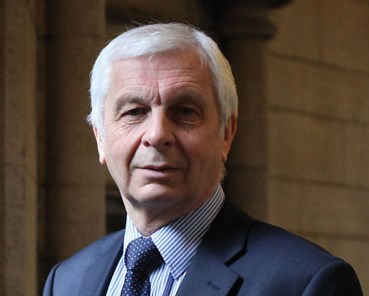If We’re To Have A Selective Education Race, Pupils Must Be Able To Change Lanes

Selective education doesn’t promote equality, says Mick Waters – but if we’re to continue with this farce, we might at least choose a system that sees rich and poor learning together in the same schools…

- by Mick Waters

The English education system presents itself as a race with the first past the post as the victors. Imagine a 400m event where athletes are allocated lanes according to their wealth, with the most wealthy on the inside track. Then take away the staggered start.
Children are born into a family. It might be the most secure or fragile beginning, but even as they enter life their educational chances are unequal. Imagine the 1,600 children born on any one day in England being placed on life’s starting line. Those from the privileged, landowning classes would be on the inside lane. On the outer edge – in what is often called ‘the gutter’ – would be the children who are born into poverty and surrounded by society’s ills. Very few occupy either extreme, but the distance separating the two is enormous.
In between are the other stereotypes – the hardworking families; the deeply in debt but coping; people on benefits; the newly wealthy; and the celebrities.
For most families, the aim is to edge towards the left, to distance themselves from the desperation of the outside lane and carve out a better existence. Many recognise that hard work can get them there. Some are happy to remain where they are and ply a middle course, enjoying fairly modest ambition. Almost everyone recognises they have to watch what is happening to their right and protect what is their territory. This makes it hard for anyone to move towards the fast track.
Growing pressures
Parents have this concept in mind when choosing a school for their child. Basically, most of us seek a school that takes the majority of its children from the lanes of track to our left. We certainly don’t want our children to mix with those further out to the right. Because of this, a school’s performance becomes a quasi-measure of social mix – hence the school league tables now serve to indicate comparative house prices.
The Prime Minister has acknowledged this and announced that she favours expanding grammar school options for pupils from the age of 11. A few will be allowed to run, unfettered, within the inner lanes because a cling-film wall will separate them from the pack.
The government has also proposed some new ‘smart’ tests to tease out which children are most deserving – But what does this say about the present SATs? And what will happen when a child does well on the SATs but fails the selection test, or visa versa?
The Prime Minister argues that parents want grammar schools. Well, many do – at least until their children fail the selection test and are consigned to the outside lanes of the secondary moderns. Of course, the desire to reach the inside lane means primary schools come under pressure, with some parents demanding a more test-focused experience for their children. Private tutors in turn build reputation based on hearsay (there are no league tables) and the pressure on children grows.
Rich meets poor
Already the debate has moved on to what proportion of pupils will be selected for grammar school. One suggestion is 7%, matching the proportion of each year group that attends independent private schools. You will notice, too, that it is a first-past-the-post assessment, rather than one that takes all pupils who meet the criteria of a pass mark. Apparently we want a meritocracy, which will ensure children try hard.
If we are to have selection, is there another formula; one that would create comprehensive primary education that isn’t, as the Primary Minister calls it, grammar schools by house prices? How about 20% of children being selected to attend a grammar school at the age of 11? However, this would be the best 20% in each separate primary school; not the accumulated 20% across several schools in a large area.
The effect would be for parents to game the system – to work out the chances of their child being selected from any given school. It would be fascinating to see the better-off jockeying to get their children into schools that would give them the best chance of being in the top 20%. Rich and poor would meet.
It still wouldn’t feel right, but it would ensure primary school populations consisted of a broader mix, and expose the grammar argument for what it is.
Mick Waters is Professor of Education at the University of Wolverhampton; the issue of school leadership is addressed in his book, Thinking Allowed on Schooling











